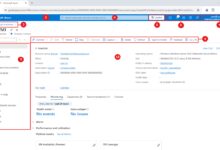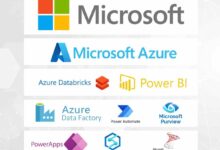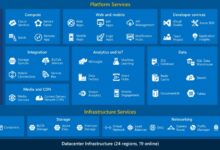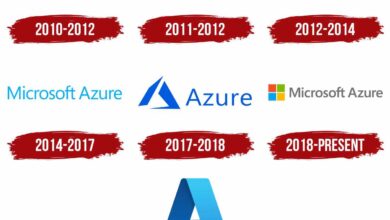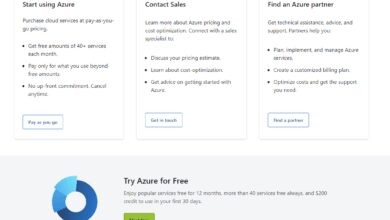Azure portal log in: 5 Easy Steps to Master Azure Portal Log In Like a Pro
Logging into the Azure portal might seem straightforward, but with security protocols, multi-factor authentication, and various account types, even seasoned users can hit snags. Let’s break down everything you need to know about the azure portal log in process—step by step.
Understanding the Azure Portal Log In Process

The azure portal log in is your gateway to Microsoft’s cloud computing platform. Whether you’re managing virtual machines, configuring storage, or monitoring applications, accessing the Azure portal securely and efficiently is the first critical step. The login process is designed to be both user-friendly and secure, accommodating a wide range of user types—from individual developers to enterprise IT administrators.
What Is the Azure Portal?
The Azure portal is a web-based interface that allows users to manage all aspects of their Microsoft Azure services. It provides a centralized dashboard where you can deploy, configure, and monitor resources across the cloud. Think of it as the control center for your entire Azure ecosystem.
- It supports over 200 services including AI, machine learning, IoT, and data analytics.
- The interface is customizable with dashboards, widgets, and role-based access control.
- Available at portal.azure.com, the portal is accessible from any modern browser.
“The Azure portal is not just a dashboard—it’s a command center for innovation in the cloud.” — Microsoft Azure Documentation
Who Uses the Azure Portal?
Users range from cloud architects and DevOps engineers to business analysts and CIOs. Each has different needs, but they all rely on the azure portal log in to access tools relevant to their roles.
- Developers use it to deploy applications and manage APIs.
- IT administrators monitor security, set up virtual networks, and manage user access.
- Data scientists leverage it to run machine learning models and analyze big data.
Because of this diversity, Microsoft has built multiple authentication methods and access levels into the login system.
Step-by-Step Guide to Azure Portal Log In
Successfully logging into the Azure portal involves more than just entering a username and password. Let’s walk through the full process from start to finish.
Step 1: Navigate to the Official Login Page
The first step in any azure portal log in is visiting the correct URL: https://portal.azure.com. Always ensure you’re on the official Microsoft site to avoid phishing scams.
azure portal log in – Azure portal log in menjadi aspek penting yang dibahas di sini.
- Avoid clicking on suspicious links from emails or messages.
- Bookmark the page for quick and secure access.
- Use HTTPS—check for the padlock icon in your browser’s address bar.
Step 2: Enter Your Credentials
Once on the login page, enter your work or school account email address (e.g., user@company.com) or a Microsoft account (e.g., @outlook.com, @hotmail.com). Note: Most enterprise users will use a work or school account tied to Azure Active Directory (Azure AD).
- If you’re using a personal Microsoft account, ensure it has been granted access to Azure resources.
- For organizations using Azure AD, your login is managed through your company’s identity provider.
- Incorrect email formats are a common cause of login failure—double-check spelling and domain.
Step 3: Complete Authentication (Including MFA)
After entering your password, you may be prompted for additional verification. This is especially true if your organization has enabled Multi-Factor Authentication (MFA).
- MFA methods include phone calls, text messages, authenticator apps (like Microsoft Authenticator), or biometric verification.
- Some organizations use conditional access policies that require MFA only under certain conditions (e.g., logging in from a new device).
- Users can pre-register their MFA methods via the Microsoft MFA setup page.
“Multi-factor authentication blocks over 99.9% of account compromise attacks.” — Microsoft Security Report
Common Issues During Azure Portal Log In and How to Fix Them
Even with a streamlined process, users often encounter issues during the azure portal log in. Understanding these problems—and their solutions—can save time and frustration.
Forgot Password or Locked Account
One of the most frequent issues is forgetting your password or getting locked out after multiple failed attempts.
- Use the “Can’t access your account?” link on the login page to reset your password.
- If you’re using a work or school account, your organization may have self-service password reset (SSPR) enabled.
- Contact your Azure administrator if SSPR isn’t available or if your account is disabled.
Incorrect Tenant or Subscription Selection
Sometimes, users log in successfully but don’t see their expected resources. This often happens when you have access to multiple Azure tenants or subscriptions.
- Check the directory switcher in the top-right corner of the portal to ensure you’re in the correct Azure AD tenant.
- Use the subscription filter to select the right subscription if resources aren’t visible.
- Administrators can assign default directories to streamline this process.
Browser Compatibility and Cache Issues
The Azure portal relies heavily on JavaScript and modern web standards. Outdated browsers or corrupted cache can prevent proper loading.
- Supported browsers include Microsoft Edge, Google Chrome, Firefox, and Safari (latest versions).
- Clear your browser cache or try logging in using an incognito/private window.
- Disable browser extensions that might interfere with scripts (e.g., ad blockers).
Security Best Practices for Azure Portal Log In
Given the sensitivity of cloud environments, securing your azure portal log in is non-negotiable. Follow these best practices to protect your account and data.
azure portal log in – Azure portal log in menjadi aspek penting yang dibahas di sini.
Enable Multi-Factor Authentication (MFA)
MFA adds an essential layer of security by requiring a second form of verification beyond just a password.
- Enforce MFA for all users, especially administrators.
- Use the Microsoft Authenticator app for push notifications and time-based codes.
- Avoid SMS-based MFA when possible, as it’s vulnerable to SIM-swapping attacks.
Use Conditional Access Policies
Conditional Access in Azure AD allows you to define rules that control how and when users can log in.
- Require MFA when users log in from untrusted locations or devices.
- Block access from certain countries or IP ranges.
- Enforce device compliance (e.g., only allow access from managed, encrypted devices).
“Conditional Access is the cornerstone of Zero Trust security in Azure.” — Microsoft Azure Security Documentation
Monitor Sign-In Logs and Alerts
Azure AD provides detailed sign-in logs that help detect suspicious activity.
- Review logs in the Azure portal under Azure Active Directory > Sign-ins.
- Set up alerts for failed logins, sign-ins from unfamiliar locations, or admin activity.
- Integrate with Microsoft Defender for Cloud for advanced threat detection.
Using Single Sign-On (SSO) for Azure Portal Access
For organizations with existing identity systems, Single Sign-On (SSO) simplifies the azure portal log in experience while enhancing security.
How SSO Works with Azure AD
SSO allows users to authenticate once and gain access to multiple applications, including the Azure portal, without re-entering credentials.
- Azure AD acts as the identity provider (IdP), integrating with on-premises systems like Active Directory via Azure AD Connect.
- Users log in to their corporate network and automatically gain access to Azure.
- Supports protocols like SAML, OAuth, and OpenID Connect.
Setting Up Federated Authentication
Federated authentication enables organizations to maintain control over user identities while allowing seamless access to Azure.
- Configure federation using Active Directory Federation Services (AD FS) or third-party IdPs like Okta or Ping Identity.
- Benefits include centralized password management and compliance with internal security policies.
- Requires proper SSL certificates and DNS configuration.
Managing Multiple Accounts and Tenants
Many professionals work across multiple Azure subscriptions and tenants—whether for different clients, departments, or personal projects. Managing these efficiently is crucial.
azure portal log in – Azure portal log in menjadi aspek penting yang dibahas di sini.
Switching Between Directories and Subscriptions
The Azure portal allows you to switch between directories (tenants) and subscriptions easily.
- Click your profile icon in the top-right corner to access the directory switcher.
- You can only view resources in subscriptions assigned to your account within the selected tenant.
- Use Azure Lighthouse to manage multi-tenant environments at scale.
Using Azure CLI and PowerShell for Faster Access
For advanced users, command-line tools offer faster and more automated access than the web portal.
- Use
az loginin Azure CLI to authenticate via browser or service principal. - PowerShell cmdlets like
Connect-AzAccountallow scriptable logins. - These tools support headless authentication for automation and CI/CD pipelines.
Advanced Tips and Tools for Power Users
Once you’ve mastered the basics of azure portal log in, you can leverage advanced tools and features to boost productivity and security.
Customizing Your Dashboard
The Azure portal dashboard is fully customizable, allowing you to create role-specific views.
- Pin frequently used resources, metrics, and quick links.
- Share dashboards with team members for consistent monitoring.
- Use Azure Resource Graph to run fast queries across all your resources.
Using Guest Accounts and B2B Collaboration
Azure supports Business-to-Business (B2B) collaboration, allowing external users to log in securely.
- Invite guest users via email; they’ll receive an invitation to access your Azure environment.
- Guests authenticate using their own identity provider (e.g., their company’s Azure AD).
- Assign least-privilege roles to minimize risk.
“Azure B2B collaboration reduces onboarding time for partners by up to 70%.” — Microsoft Case Study
Troubleshooting and Support Resources
Even with best practices in place, issues can arise. Knowing where to find help is essential.
Official Microsoft Documentation and Support
Microsoft provides extensive documentation and support channels for azure portal log in issues.
azure portal log in – Azure portal log in menjadi aspek penting yang dibahas di sini.
- Visit Microsoft Learn for tutorials, guides, and API references.
- Access the Azure Status page to check for service outages.
- Open a support ticket via the Help + Support blade in the portal.
Community Forums and User Groups
The Azure community is vast and active, offering peer support and real-world solutions.
- Participate in the Microsoft Q&A forum for technical questions.
- Join local or virtual Azure user groups to network and learn.
- Follow Azure experts on platforms like LinkedIn and Twitter for tips and updates.
What should I do if I can’t log in to the Azure portal?
First, verify your internet connection and ensure you’re using the correct URL: portal.azure.com. Check your credentials and try resetting your password if needed. If MFA is enabled, ensure your authentication method is working. If the issue persists, contact your Azure administrator or consult Microsoft’s support resources.
Can I use a personal Microsoft account to log in to Azure?
Yes, but with limitations. Personal Microsoft accounts (e.g., @outlook.com) can be used to create free Azure accounts or access resources if explicitly granted permission. However, most enterprise scenarios require a work or school account managed through Azure Active Directory.
Why am I being asked to verify my identity every time I log in?
This could be due to conditional access policies, expired sessions, or your browser not saving cookies. Check if your organization requires MFA for every login or if you’re using a private browsing mode. Adjusting session lifetime settings in Azure AD can help reduce re-authentication frequency.
azure portal log in – Azure portal log in menjadi aspek penting yang dibahas di sini.
How do I switch between multiple Azure subscriptions?
After logging in, click your profile icon in the top-right corner and select ‘Switch directory’ or use the subscription filter in the portal’s main menu. You can only view resources in subscriptions assigned to your account within the selected directory.
Is it safe to log in to the Azure portal on public Wi-Fi?
It’s not recommended. Public Wi-Fi networks are often unsecured and can expose your credentials to interception. If you must log in, use a trusted Virtual Private Network (VPN) and ensure MFA is enabled to add an extra layer of protection.
Mastering the azure portal log in process is more than just entering a password—it’s about understanding the ecosystem, securing your access, and troubleshooting issues efficiently. From navigating the login page to leveraging advanced tools like SSO and CLI, every step contributes to a smoother, safer cloud experience. Whether you’re a beginner or a seasoned pro, applying these best practices will help you stay in control of your Azure environment. Stay informed, stay secure, and make the most of Microsoft’s powerful cloud platform.
azure portal log in – Azure portal log in menjadi aspek penting yang dibahas di sini.
Further Reading:
